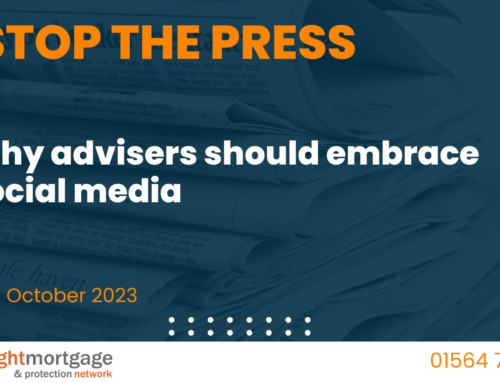In last year’s FCA thematic review of the mortgage market one of the key things highlighted was the ‘savvy consumer’. That’s the client who comes in the door with a very clear idea of what they need and expect you to get them it. They don’t think they need advice, they have after all consulted friends, family and the internet for that. What they need is a facilitator, someone who will place the order for them, give guidance and iron out the wrinkles they might face. And while it might be a bit tricky to tell them their idea of right isn’t quite…right, it’s also a great opportunity for advisers to highlight the value real advice delivers.
While the report focuses on consumer behaviours in relation to mortgages the very same behaviours apply when it comes to protection. Many protection sales never get past the savvy consumer. I don’t need it, the state will provide, or I can’t afford it, it’s all a con are just some of the barriers an adviser has to crash through to get protection onto the client’s radar. Not every client can be convinced. What happens when it all goes wrong? Who will be held accountable for those poor decisions? Will it be the savvy consumer or the adviser who placed the order?
The truth is that most people need some form of protection and there are examples of this throughout the media. I picked up on a programme that was on TV the other night. Don’t judge, but it was a reality programme called ‘can’t pay, we’ll take it away’. I don’t normally watch the programme, honestly, but this particular episode featured a gentleman who was being evicted from his property. When asked how it had come to this it came to light that he had a brain tumour which had caused permanent brain damage, preventing him from running his mechanic’s business. Over the course of two years, various government agencies had been involved in the case but they couldn’t agree which budget he should come under. As a consequence his rent was paid short every month for two years. The landlords were visibly upset at the outcome. He’d been a good tenant and until his illness always paid on time and looked after the property but they couldn’t afford to keep him there. As a single British male, he is apparently a low priority for emergency housing. The Bailiffs were actually on to the local housing team trying to help the man. They stated that this is not an uncommon situation, where illness results in eviction.
But what is the point of this story? Well firstly, it highlights the gaps in the support system that so many savvy consumers have great faith in. And it’s a situation that will only get worse as welfare reforms continue. It also highlights the opportunity programmes like this present to engage clients in the protection story. How different would that man’s life be if he’d had some good advice from a financial adviser? In fact, how many clients’ families would be living a much poorer life, if not for the protection their adviser talked them into buying?
Unless confronted with the hardship that illness or premature death can inflict on a family it can be hard for clients to imagine themselves in that situation. Being able to draw on the support providers like Royal London offer, as well as real life stories like the one I mentioned, can help advisers paint those pictures for their clients. Ultimately we all want more clients to have enough of the right cover so that they never have to feature on a show like ‘can’t pay, we’ll take it away’.





